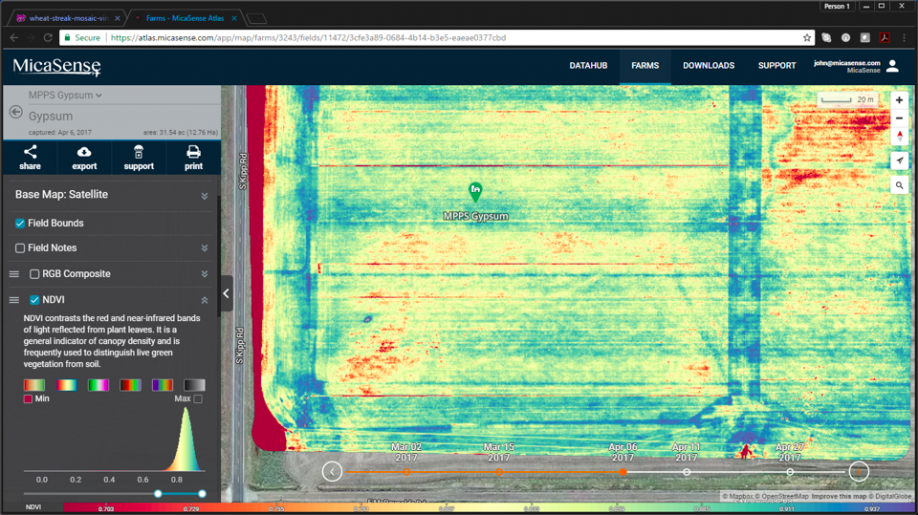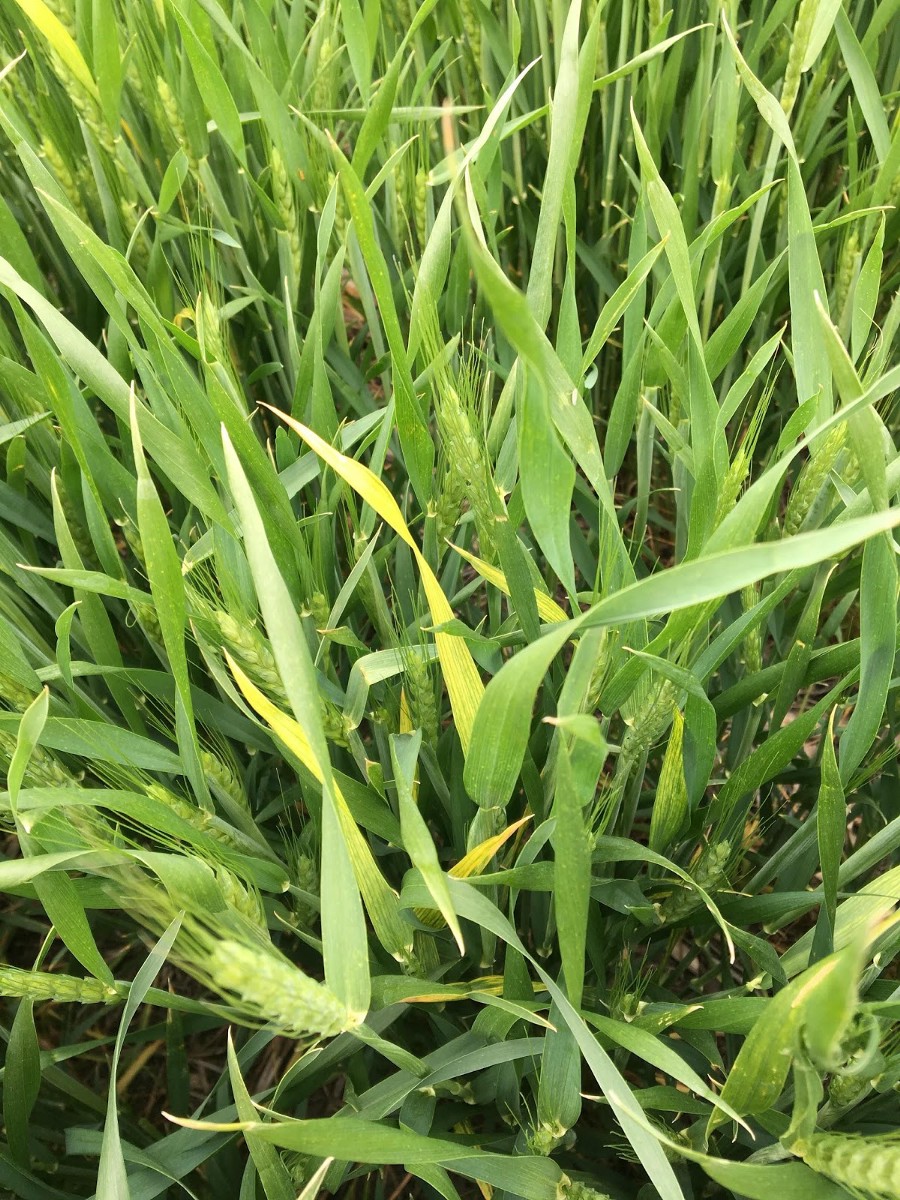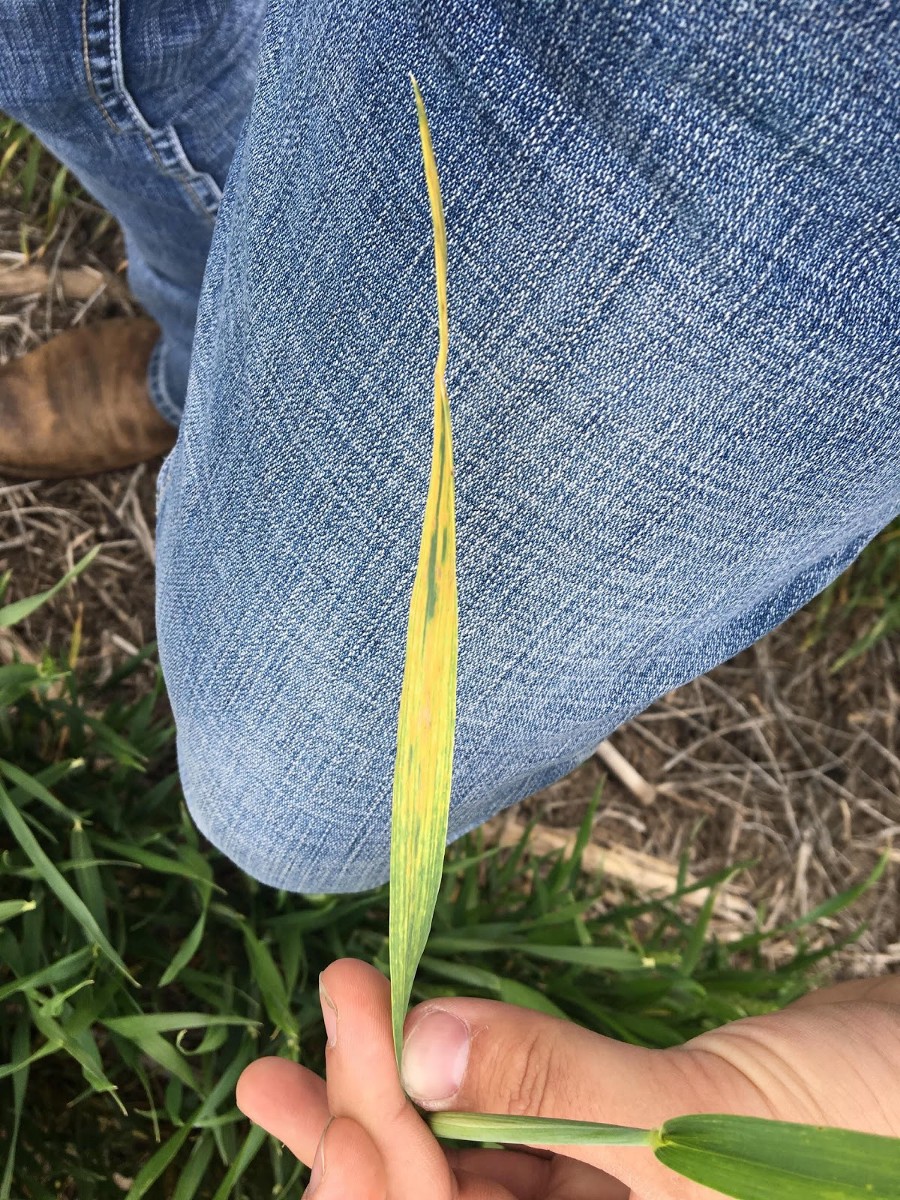A sensor without the red edge band may still enable the detection of stress and disease, but it may be after there is a chance to recover yield potential which would result in a reduction of profit per acre.
Detecting Disease Earlier: The Importance of the Red Edge Band
Contributed by | MicaSense
Reprinted with permission from the MicaSense blog:
When people first learn about the MicaSense RedEdge, they often ask if it can detect stress earlier than an RGB or an NDVI camera. The answer is yes! This is because the RedEdge camera captures a critical part of the light spectrum for studying plants (712–722 nm), called the red edge band. It is in this section of the spectrum that the first signs of stress start to show.
When used in vegetation indexes like NDRE or the MicaSense Chlorophyll Map, the red edge band is highly effective in highlighting disease earlier. Oftentimes, if disease is prevalent in a crop, it can be seen in red edge based indices before it becomes visible in NDVI. This early detection helps users catch disease sooner and act faster to stop the spread.
To better demonstrate this, we’ve included a dataset and project details kindly provided by Kansas State researcher Dr. Ray Asebedo. Dr. Asebedo used the RedEdge camera to identify disease in a winter wheat field before it was visible in NDVI.
View the Atlas data shown in this article here.
Detecting Disease Earlier With the Red Edge Band
Dr. Antonio Ray Asebedo, Assistant Professor of Precision Agriculture at Kansas State University (KSU), conducts a research program that seeks to increase yield, efficiency, profit, and sustainability of agriculture with robotics. Dr. Asebedo and his team planted different varieties of winter wheat in the fall.
In the early spring, Dr. Asebedo and his team mapped the field using a drone equipped with the MicaSense RedEdge to check how wheat varieties were performing with respect to stresses and yield.
After flying the field, image analysts reviewed the collected imagery in MicaSense Atlas.
When first looking at the data in RGB, NDVI, and CIR Composite layers (all non red edge based indices,) the field appeared mostly homogeneous and healthy.

.png)
RGB and CIR color composites

NDVI Index
However, when looking at the Chlorophyll Map, the story changed. The southern center portion of the field appeared to a section of significant variation in chlorophyll content.

Chlorophyll Map
Intrigued by these findings, Dr. Asebedo visited the southern part of the field to determine what was causing stress in that region.
Walking the affected area, he observed yellow streaking and mosaic patterns on the leaves, and was able to relate these symptoms to the chlorophyll deficiency observed in the Chlorophyll Map. With these observations, he was able to determine that the problem area had a wheat streak mosaic infection.
Wheat streak mosaic is a virus spread by wheat curl mites. It is often found on volunteer wheat and carried to nearby fields by the wind, causing a significant impact on yield. A yield reduction was observed in the areas WSMV was located. Dr. Asebedo used this data to demonstrate the importance of controlling volunteer wheat to reduce habitat for the curl mite. This management practice will help farmers mitigate the risk of yield reducing viral infections from curl mites and aphids.


Wheat leaves with yellow patterns, symptomatic of a wheat streak mosaic infection
Conclusion
As with most diseases spread by mites, early detection is crucial. To achieve that, the sensor is key. Dr. Asebedo’s wheat trial is one of many examples of how the MicaSense RedEdge camera enables earlier disease detection. This trial site was examined regularly by Asebedo’s team, yet the disease remained invisible until highlighted by the Chlorophyll Map (a red edge based index).
For many types of crop stress such as water, nitrogen, and fungal diseases, early detection and fast response is key to prevent yield loss and maintain maximum potential. A sensor without the red edge band may still enable the detection of stress and disease, but it may be after there is a chance to recover yield potential which would result in a reduction of profit per acre.
The content & opinions in this article are the author’s and do not necessarily represent the views of AgriTechTomorrow
Comments (0)
This post does not have any comments. Be the first to leave a comment below.
Featured Product

